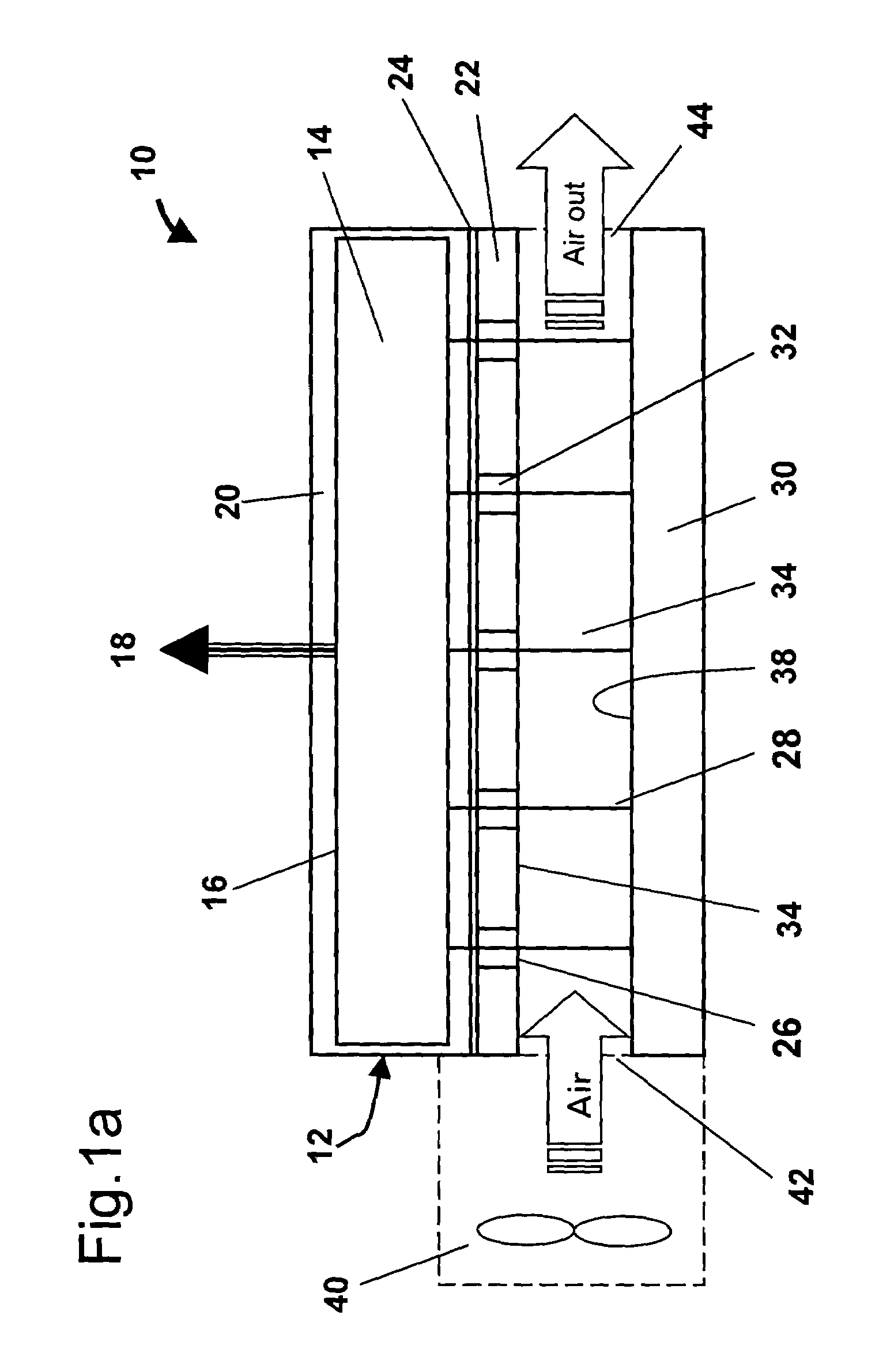Light emission display arrangements
a technology of display and light emission, applied in the direction of discharge tube main electrodes, identification means, instruments, etc., can solve the problems of many devices of this type not producing much light individually, affecting the operation of the device, and the electroluminescent materials used may degrade at different rates at different temperatures, so as to improve the cooling arrangement of such displays and improve the addressable display
- Summary
- Abstract
- Description
- Claims
- Application Information
AI Technical Summary
Benefits of technology
Problems solved by technology
Method used
Image
Examples
Embodiment Construction
[0045]The present invention will now be described by way of example only, with reference to certain embodiments and with reference to the above mentioned drawings. The skilled person will appreciate that many alternative arrangements are possible while still remaining within the scope of the attached claims. The invention will be described with reference to flat panel displays. It is understood that a flat panel display does not have to be exactly flat but includes shaped or bent panels. A flat panel display differs from display such as a cathode ray tube in that it comprises a matrix or array of “cells” or “pixels” each producing or controlling light over a small area. There is a relationship between the pixel of an image to be displayed and a cell of the display. Usually this is a one-to-one relationship. Each cell may be addressed and driven separately. It is not considered a limitation on the present invention whether the flat panel displays are active or passive matrix devices....
PUM
 Login to View More
Login to View More Abstract
Description
Claims
Application Information
 Login to View More
Login to View More - R&D
- Intellectual Property
- Life Sciences
- Materials
- Tech Scout
- Unparalleled Data Quality
- Higher Quality Content
- 60% Fewer Hallucinations
Browse by: Latest US Patents, China's latest patents, Technical Efficacy Thesaurus, Application Domain, Technology Topic, Popular Technical Reports.
© 2025 PatSnap. All rights reserved.Legal|Privacy policy|Modern Slavery Act Transparency Statement|Sitemap|About US| Contact US: help@patsnap.com



